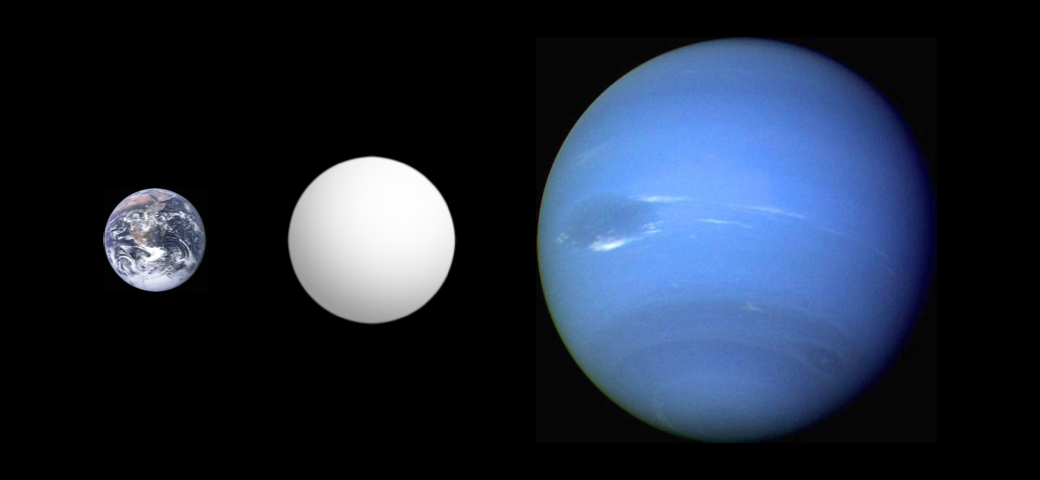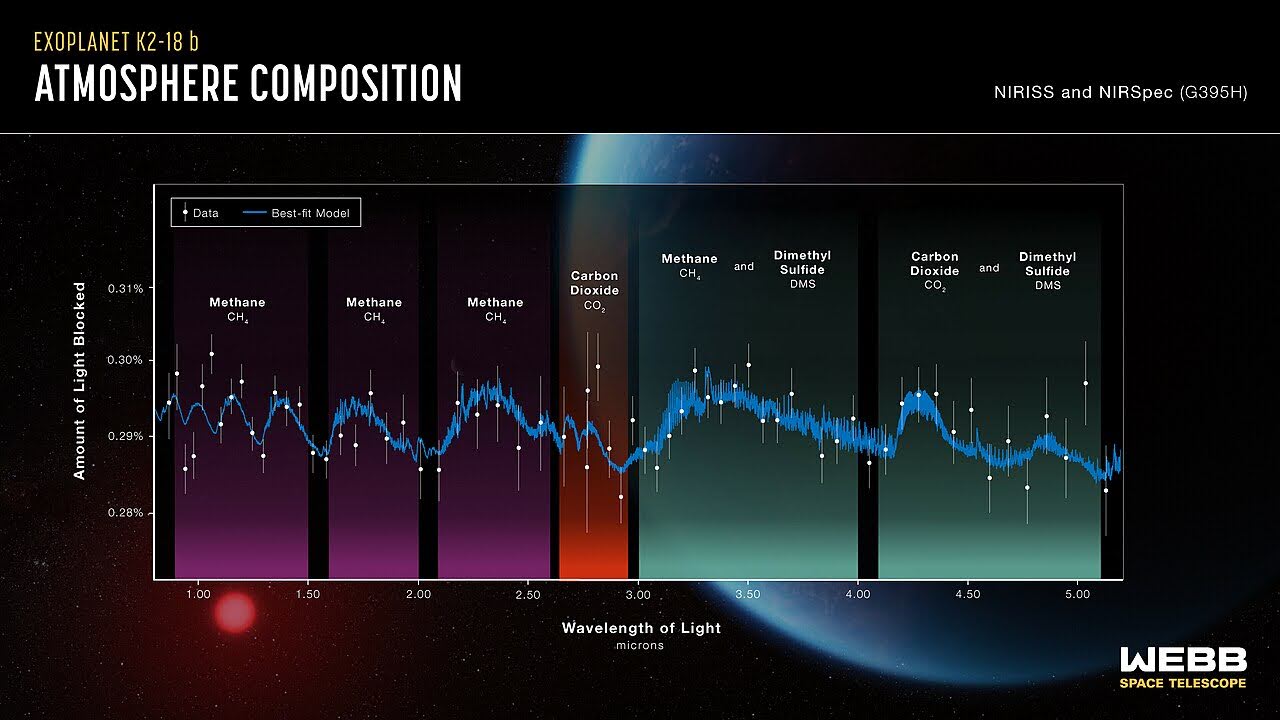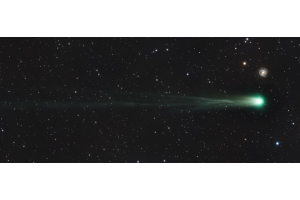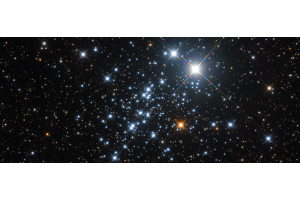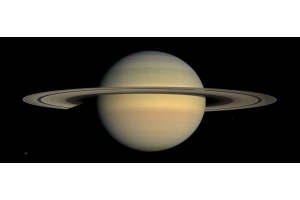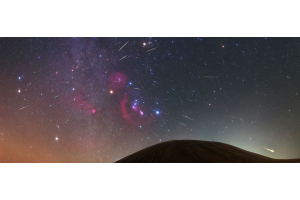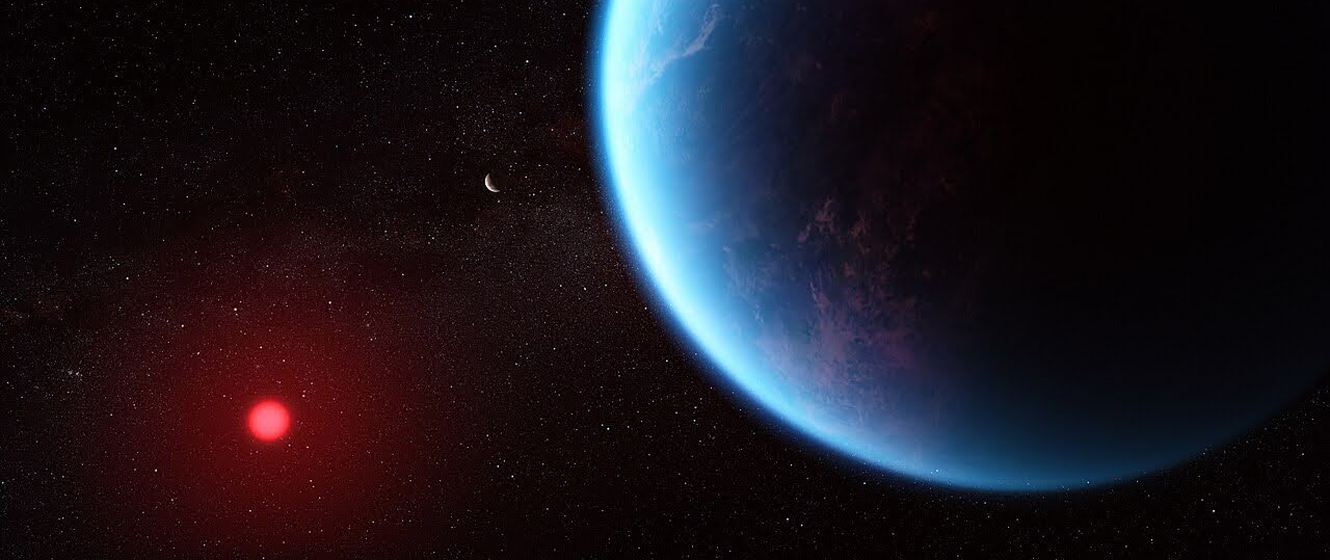
The search for life beyond Earth has long captivated us as a species, driving scientific exploration to uncover whether we are alone in the universe. To answer this question, we’ve launched telescopes into space to peer into the distant unknown of the universe. One of James Webb’s capabilities is to look for extrasolar “biosignatures”, the chemical signatures in the atmospheres of other worlds that are created by life here on Earth. The recent discovery of dimethyl sulfide (DMS) in the atmosphere of exoplanet K2-18b, located 124 light-years away in the constellation Leo, marks a new and exciting turn in the search for life. Detected by the James Webb Space Telescope (JWST), DMS is a molecule produced on Earth exclusively by microbial life, making its presence on K2-18b a tantalizing hint of potential extraterrestrial biology. However, caution is warranted before the implications of this discovery are understood. This finding builds on earlier observations of methane and carbon dioxide, suggesting K2-18b may be a Hycean world—a planet with a hydrogen-rich atmosphere and a global ocean, conditions that could support life. Identifying biosignatures like DMS on distant worlds not only expands our understanding of habitable environments but also challenges us to rethink the conditions under which life might thrive.
When an exoplanet passes in front of its host star, some of the starlight filters through the planet's atmosphere, where different chemicals absorb specific wavelengths, creating unique absorption patterns or spectral lines in the starlight's spectrum. JWST's advanced instruments, such as the Near-Infrared Spectrograph (NIRSpec) and the Mid-Infrared Instrument (MIRI), capture and analyze these spectra. By comparing the observed spectrum to models of known molecular signatures, scientists can identify chemicals like water vapor, methane, and carbon dioxide, revealing clues about the atmosphere's composition and conditions. This method allows JWST to study distant worlds with unprecedented precision, even those located hundreds of light-years away. This method was exactly how DMS was detected in K2-18b’s atmosphere.
K2-18b is an exoplanet located 124 light-years from Earth, orbiting a red dwarf star known as K2-18. Discovered as part of the Kepler Space Telescope’s extended K2 mission, this planet has gained significant attention since the discovery of water vapor in its atmosphere. With a size and composition resembling that of Uranus or Neptune, K2-18b is classified as a sub-Neptune, featuring a hydrogen-rich atmosphere. In 2019, astronomers using the Hubble Space Telescope (HST) detected water vapor in its atmosphere, a groundbreaking finding that marked one of the first clear detections of water on an exoplanet in the habitable zone—the region around a star where conditions might allow liquid water to exist. Follow-up observations in 2023 using JWST confirmed the presence of carbon dioxide and methane. These discoveries suggest a complex atmosphere, potentially with clouds or hazes, though the exact conditions remain under study.
Despite its position in the habitable zone, K2-18b faces challenges to habitability. The planet is likely tidally locked due to its close 33-day orbital period, meaning one side perpetually faces its star while the other remains in darkness, potentially creating extreme temperature differences. One can see an example of a tidally locked world in our own night sky – the Moon. The Moon is tidally locked to the Earth, so only one side is visible from observers on the ground. Additionally, red dwarf stars like K2-18 are known for frequent stellar flares, which could strip away atmospheres or bombard planets with harmful radiation, raising questions about whether planets around M dwarf stars can truly support life. To explore these dynamics, astronomers and climate scientists have partnered together to develop climate models as part of the CAEMBERT (Climate and Atmospheric Evolution of Mini-Neptunes and Beyond Exoplanets with Retrieval Techniques) project. These models simulate K2-18b’s atmospheric conditions, helping researchers assess whether liquid water could persist on its surface or within its atmosphere, and how stellar activity might influence its long-term habitability.
Dimethyl sulfide has been called a potential “biosignature” because here on Earth it is short-lived and is replenished by life. For instance, the Rosetta mission detected DMS in the coma of Comet 67P/Churyuimov-Gerasimenko, a celestial body devoid of life, demonstrating that DMS can form in environments hostile to biological organisms. Additionally, laboratory experiments have shown that DMS can be synthesized abiotically through photochemical reactions driven by ultraviolet (UV) light from a star, suggesting that stellar radiation could produce DMS in the atmospheres of exoplanets without the need for life. Thus, the detection of DMS in an exoplanet’s atmosphere is not sufficient to confirm the presence of extraterrestrial life.
Despite this, DMS remains noteworthy in the context of exoplanet research for several compelling reasons. First, as previously mentioned, its short-lived nature in planetary atmospheres means that its presence requires a continuous or significant production source, whether biological or abiotic. DMS could strengthen the case for life if detected in substantial quantities, particularly in combination with other potential biosignatures like oxygen or methane, as the simultaneous presence of multiple life-associated molecules is less likely to result from abiotic processes alone. That being said, no signs of oxygen have been discovered in K2-18b as of this writing.
Additionally, the specific environmental conditions of an exoplanet, such as its atmospheric composition, temperature, and stellar radiation, can provide critical context for interpreting DMS detection. For example, if DMS is found on a rocky, temperate exoplanet with liquid water—conditions analogous to Earth’s—its presence might carry more weight as a potential indicator of life compared to a gas giant or a heavily irradiated planet where abiotic production is more plausible. So, in this context, while DMS alone is not a definitive marker of life on this extrasolar planet, its detection in an exoplanet’s atmosphere could serve as a crucial piece of a future puzzle on a planet that is more earth-like, making these observations at the very least the perfect validation of JWST’s capabilities.
So what’s next then? Obviously, this discovery will be heavily scrutinized by astronomers and other scientists, as any discovery of this magnitude should be. It’s probable that this is a real signal, but additional observations may be warranted to increase the certainty and look for other biosignatures that could be present. Worlds like K2-18b are unusual places to find life, because they are more like gas giants like Neptune and Uranus than rocky planets like Mars or Earth. That being said, it’s expected that future observations of rocky-like planets, Earth-sized or smaller, will be conducted, and evidence of life on those worlds may be forthcoming. Stay tuned for future Webb discoveries!

Learn More
Interested in diving deeper into the world of astronomy? Check out our AstronomyHub for a wealth of articles, guides, local resources for planetariums and observatories near you, and more to enhance your stargazing experience.




